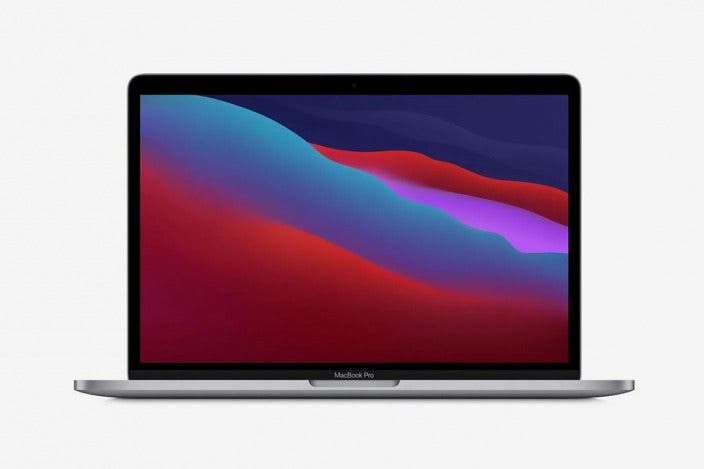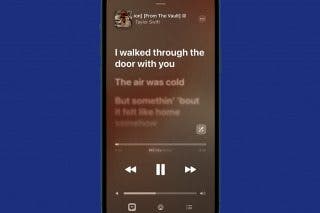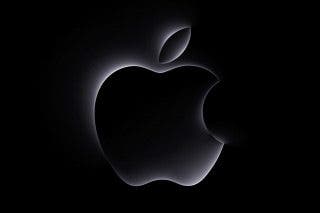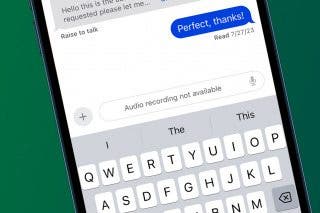New macOS 13 Rumors: What to Expect from This Mammoth Update
Will 13 be the lucky number for macOS? We'll go over everything we know about macOS 13, from release dates to rumors.


While it seems like we just got macOS Monterey, it's almost time for a new macOS to make its debut. We can probably expect macOS 13 to be announced at WWDC in June and released in the fall, but what else do we know about it? Here, we'll cover the expected release date, potential names, and what we hope to see in the new macOS.
Related: iPhone 14 Release Date & Rumor Roundup
When Is the macOS 13 Release Date?
While we expect the new macOS 13 to be announced at WWDC, it won't be released then. We expect WWDC 2022 will likely be held either June 6 or June 13, which would be in line with previous dates WWDC has been held on.
If this prediction holds, we can probably expect to see macOS 13 released sometime in the fall, likely October, as macOS Monterey was released on October 25, 2021. We can hope to see a public beta release this summer in the weeks after WWDC, so any early adopters can jump on the new operating system before its formal release. To learn more about how to optimize your macOS, check out our Tip of the Day newsletter.
What's in a Name?
Since the release of macOS Mavericks (version 10.9) in October 2013, Apple has been naming its operating systems after Californian landmarks. Most speculate that this trend will continue, with macOS 13 perhaps being christened Mammoth after California's Mammoth Lakes ski destination. According to 9to5Mac, Yosemite Research LLC (a shell corporation owned by Apple) renewed its trademark on the name "Mammoth" late last year, which seems to be a pretty good hint that Apple intends to use this name.
Compatibility
What kind of Mac do you need to have to run macOS 13, whatever it may be called? While there may be features more specifically focused on Apple silicon Macs, macOS 13 should still run and offer new features for Macs with Intel chips as well. Here are the computers we can still expect to run macOS 13:
- iMac: from fall 2015 and later
- iMac Pro: 2017 and later
- Mac mini: fall 2014 and later
- Mac Pro: 2013 and later
- Mac Studio: all models
- MacBook: 2015 and later
- MacBook Air: 2015 and later
- MacBook Pro: 2015 and later
What We Hope to See from macOS 13
Okay, so we can guess when we'll see macOS 13 and what it will be called, but what new features can we actually expect from it? Right now, it's too early to say specifics, but here are some things we're hoping to see from the new Mac operating system.
For one, we hope it will work smoothly for a wide range of Mac computers out of the gate. Many people, even with ones with fairly recent Mac models had trouble when macOS Monterey was initially released, so we hope that won't be a problem with macOS 13.
Many are also hoping that the flexibility we have with widgets in iOS and iPadOS will move over to macOS with this newest iteration. The ability to place widgets anywhere you want on your desktop, the way you now can with other Apple operating systems, would be a great feature to bring to macOS 13.
We're big fans of Universal Control—or at least the idea of Universal Control—but expanded capabilities, like compatibility with iPhones, could turn our love from theoretical to practical. Imagine being able to drag a video or song from your Mac to your iPhone and have the video and audio keep playing seamlessly. That's the dream.
What are your wishlist items for macOS 13? Let us know in the comments!

August Garry
August Garry is an Associate Editor for iPhone Life. Formerly of Gartner and Software Advice, they have six years of experience writing about technology for everyday users, specializing in iPhones, HomePods, and Apple TV. As a former college writing instructor, they are passionate about effective, accessible communication, which is perhaps why they love helping readers master the strongest communication tools they have available: their iPhones. They have a degree in Russian Literature and Language from Reed College.
When they’re not writing for iPhone Life, they’re reading about maritime disasters, writing fiction, rock climbing, or walking their adorable dog, Moosh.


 Rachel Needell
Rachel Needell
 Olena Kagui
Olena Kagui

 Kenya Smith
Kenya Smith
 Leanne Hays
Leanne Hays

 Amy Spitzfaden Both
Amy Spitzfaden Both
 Rhett Intriago
Rhett Intriago
 Nicholas Naioti
Nicholas Naioti





